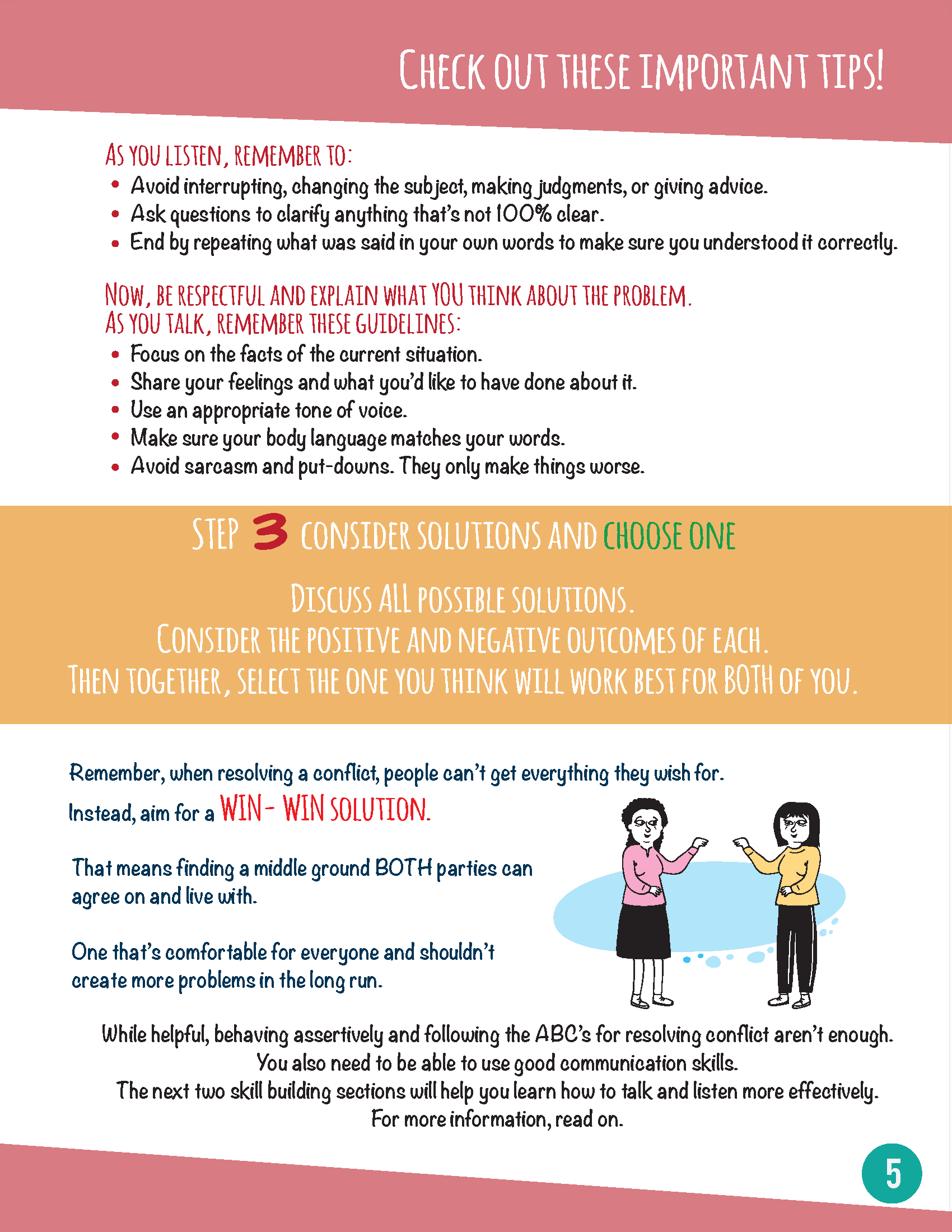
Check out these important tips!
As you listen, remember to:
Avoid interrupting, changing the subject, making judgments, or giving advice.
Ask questions to clarify anything that’s not 100% clear.
End by repeating what was said in your own words to make sure you understood it correctly.
Now, be respectful and explain what YOU think about the problem.
As you talk, remember these guidelines:
Focus on the facts of the current situation.
Share your feelings and what you’d like to have done about it.
Use an appropriate tone of voice.
Make sure your body language matches your words.
Avoid sarcasm and put-downs. They only make things worse.
STEP 3 consider solutions and choose one
Discuss all possible solutions.
Consider the positive and negative outcomes of each.
Then together, select the one you think will work best for both of you.
Remember, when resolving a conflict, people can’t get everything they wish for.
Instead, aim for a win-win solution.
That means, finding a middle ground both parties can agree on and live with.
One that’s comfortable for everyone and shouldn’t create more problems in the long run.
While helpful, behaving assertively and following the ABC’s for resolving conflict aren’t enough.
You also need to be able to use good communication skills.
The next two skill building sections will help you learn how to talk and listen more effectively.
For more information, read on.
Lesson Progress
- Intro to Conflict Resolution
- How People Behave in Conflict Situations
- Other Characteristics of Aggressive People
- The ABC'S of Conflict Resolution
- Other Important Tips
- Skill Building "I" Statements
- Skill Building: Reflective Listening
- More Pointers on Talking and Listening
- Listening In Conflict Situations
- Practice Skill Building “I” Statements
- Skill Building: Reflective Listening